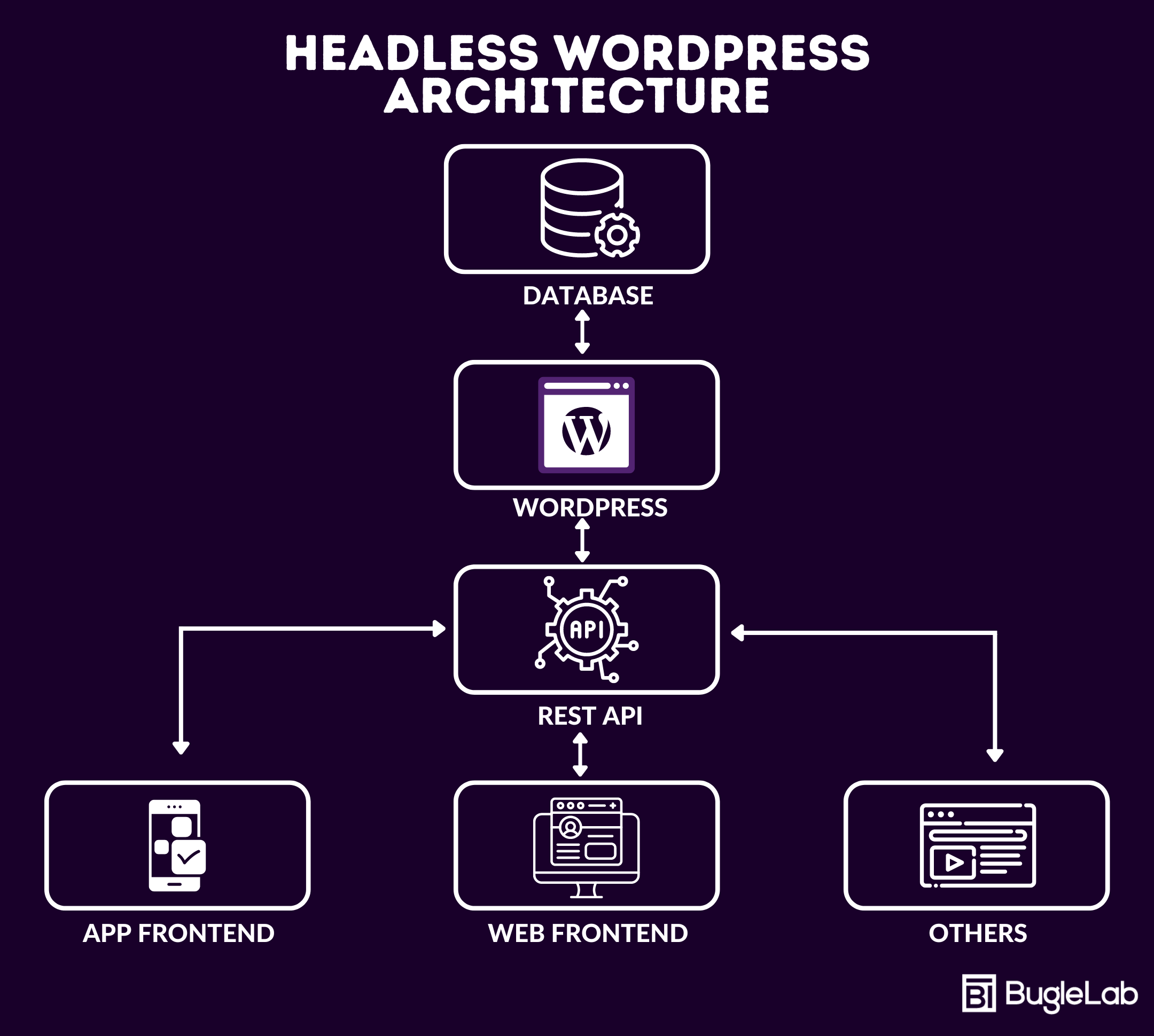Introduction
WordPress is a content management system (CMS) that enables website creation and management. It is widely used, flexible, and extensible. It can be used as a data source for frontend applications and has many plugins.
It powers over a third of the world’s websites and is one of the most popular open-source CMSes.
WordPress is best known for its focus on blogging, but it has grown into a flexible CMS that can be used for many different kinds of websites, such as eCommerce, news, and educational sites.
One of the newest and most popular trends in WordPress development is headless WordPress.
What is headless WordPress?
WordPress is a popular content management system (CMS) that powers millions of websites. It’s a free and open-source platform that is relatively easy to use, making it a popular choice for small businesses, bloggers, and even large organizations.
WordPress has been around for almost two decades now. From the core, it has been a CMS for individual blogs but, with time, has evolved to house nearly all kinds of applications.
WordPress Core
While the core architecture remains intact, open-source contributors had to induce flexibility for other developers to create more plugins, create attractive UIs and hack their way around the robust and stiff way of doing things. This has led to the birth of several businesses that run on and because of WordPress, like WooCommerce.
While the reign of plugins has made WordPress very quick to build a complex business application, its old but highly functional admin panel has been cherished by content managers and developers for a long time, and its lack of good theming tools and customization options for the front end feels more limiting.

The Double-edged Sword and Developer’s Way Out
However, this induced flexibility can also be a double-edged sword. With the advent of new JavaScript front-end frameworks, more complex UIs, and the need for single-page applications, managing a WordPress theme becomes very tiring. So, unless the creators embark on the journey to finish this, we, the developers, will have to fix this ourselves. To do so, an easy solution that comes to mind is to decouple the front end from the backend.
And thus, we move to a solution called “HEADLESS” WordPress. Where we use WordPress for all its good and separate the UI from it. Mindwell, WordPress also provides a range of tools to achieve this decoupling more conveniently than you think.
What is Headless WordPress?
Headless WordPress is a term used to describe a WordPress site used as a backend data source for a front-end application. The front-end application can be built using any programming language or framework and hosted on any web server.
Headless WordPress sites are becoming increasingly popular as a way to decouple the WordPress CMS from the front-end of a website. This offers a number of benefits, including the ability to use WordPress as a headless CMS for mobile apps, single-page applications, and static sites. It also makes it possible to take advantage of the vast WordPress plugins and themes ecosystem.
Headless WordPress uses WordPress as a backend content management system (CMS) without a traditional WordPress front-end. In other words, it’s a way to use WordPress without any WordPress themes or plugins.

How it began
The term “headless WordPress” is relatively new, but the concept is not. WordPress has long been used as a backend for other front-end technologies. For example, the popular WordPress plugin REST API was created in 2012 and allowed WordPress to be used as a backend for mobile apps and other external applications.
In recent years, the concept of headless WordPress has gained popularity as a way to separate the WordPress backend from the front-end.
This might sound like a strange way to use WordPress, but it can actually be quite powerful. It allows you to have complete control over the front-end of your website while still being able to take advantage of all the features that WordPress offers.
How to achieve headless WordPress
The solution is pretty simple and has been in front of our eyes since the dawn of the apps on the iPhone – APIs.

Basically, we want to use the backends and plugins that WordPress provides us. Many of these plugins register their hooks for WordPress to integrate into their features. These hooks can either be used from routes injected into the WordPress by the plugin itself, like woocommerce, or they can be queried from custom routes developers can add.
So basically, API is our way out, and there are two kinds of these APIs:
Rest API: WP comes with this built-in. Go to your site/wp-json, and you will see all the rest of the routes. This built-in rest API into WordPress is flexible if you know your way around WordPress. You can start by registering your custom route through the register_rest_route() method. You can check more here - https://developer.wordpress.org/reference/functions/register_rest_route/
GraphQL: I personally have a love-hate relationship with this one, but you can add a GraphQL plugin from more than a dozen available in the plugin store. They are a reflection of your rest routes in a GraphQL approach. While GraphQL architecture saves a lot of time, an API developed on top of another API makes editing more rigid.
Pros and Cons of this architecture:
Let’s discuss the Cons of this now:
Decoupling is like moving apart the roads and joining them with a bridge. It’s less secure now. You might end up exposing things you don’t want.
While being developer friendly, it will take more developer time.
Some Plugins might not support this approach, and invoking them and using them in a decoupled fashion will require you to spend more time developing a meta plugin to call the hooks.
This setup does not age well. It needs regular maintenance as plugins you use regularly change their hooks and APIs.
A Headless WordPress setup can be more complex than a standard WordPress installation. You must manage the WordPress backend and the front-end application and ensure they are correctly configured and working together.
Find out the business advantage JAMstack has over monolithic WordPress here.
And the Pros:
More Flexibility and Control: When using a traditional WordPress theme, you’re limited to the theme’s options. With headless WordPress, you can create a custom website that looks and feels exactly how you want it to.
Reusable API: The API you build can also be reused to build a mobile application.
Use Core features: You still get to use the excellent WordPress admin panel, a mature suite of plugins, and a plugin manager.
Performant Website: Because you’re not loading any unnecessary code, your website will be able to load faster and be more responsive to user input.
Finding WordPress theme developers is difficult; people are moving away from this tech.
Do you need headless WordPress?
Given the above pros and cons, you need to see if the pros outweigh the cons in your application and then approach using a headless WordPress installation accordingly.
If you’re looking for a more flexible and customizable way to use WordPress, headless WordPress might be the right choice. It offers all of the benefits of WordPress without any of the drawbacks.
If your site relies heavily on WordPress features such as the visual editor or post formats, then a headless setup may not be the best option.
Conclusion
With an ever-changing technological landscape, there’s no shortage of new and exciting ways to build applications. Whether it’s based on a RESTful API service or a full-blown headless stack, as developers, we are constantly challenged to stay on top of the technologies on which we’ve built our livelihoods.
Schedule a call with us here if you are like the many agencies and professionals we talk to daily who love WordPress but hate its monolithic nature.
We are a Jamstack website development agency that can build headless WordPress websites for your business—we want to help you succeed online.






